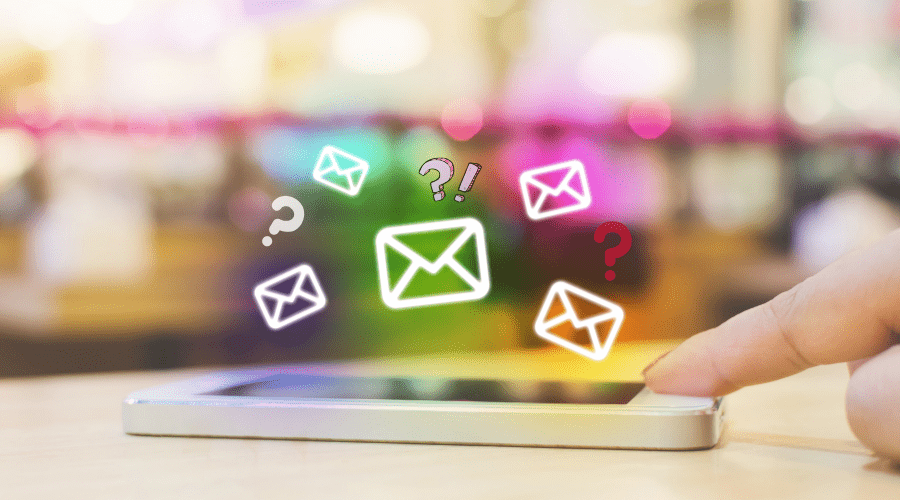
Common Email Marketing Mistakes
Email marketing is an old-school strategy that paved the way for more recent digital marketing developments. Though it’s been around for a long time, it’s far from dead. Despite countless innovations in the digital marketing landscape, email marketing proves that it can pay to go back to basics. In fact, 81% of small business owners use email as their primary customer acquisition method.
It’s no secret that email marketing can be highly effective. However, mistakes are also easily made. These common errors can impact the success of a campaign significantly.
If email marketing isn’t achieving the desired results for your business, then perhaps you need to re-evaluate your strategy.
Below are some of the most widespread email marketing errors that could be killing your chances of converting.
1. No welcome emails
Compared to other promotional emails, welcome emails enjoy the highest open rates. By choosing not to use this tactic, you’re missing out on a golden opportunity. People sign up for emails because they are interested. They like what they’ve seen and want to be kept up to date. Get off on the right foot and start sending welcome emails to your new subscribers.
In your initial communication, you should address the subscriber by name. Thank them for their interest, and include a call to action. Once they are signed up, they’ve given your business permission to send them marketing material, including newsletters, new product alerts, discounts, loyalty programs and holiday promotions. Many companies offer a small discount to new subscribers as an incentive to make a purchase.
2. No calls to action
What’s the use of a promotional email without a clear call to action? The purpose of email marketing is to prompt customers to purchase from your business. By signing up, they’ve already indicated their interest. Of course, this isn’t always enough to seal the deal. They often need a nudge in the right direction.
There are a number of effective calls to action to choose from, for example “Click for Free Trial” or “Join Our Loyalty Program”. It will all depend on the context of the email. Use terse, coherent language and a sense of urgency. It’s always good to include a deadline or a time limit. This will encourage the reader to act quickly. Be mindful not to overwhelm your subscribers with calls to action, however. Focus on one thing at a time so that the purpose of the email is clear.
3. Flooding peoples’ inboxes
Did you know that the average office employee receives 121 emails per day? We all know how it feels to have a clogged inbox. Needless to say, bombarding your subscribers with email after email is not a good tactic. In fact, too many emails is the number one reason that people unsubscribe from a newsletter.
With this in mind, try to limit your promotional emails to one or two per week. Most people don’t shop online every day, so this should suffice. Another way to avoid your subscribers becoming overwhelmed is by setting up preferences when they sign up. Place the power in their hands by asking them how frequently they would like to receive emails from you, and what kind of content they’d like to see. This also streamlines the process by segmenting your audience.
4. No mobile optimisation
In this day and age, companies should know how crucial it is to optimise their content for mobile. In fact, mobile has overtaken desktop in terms of usage, with 81% of people using mobile devices to check their emails. Make sure your promotional emails are mobile-friendly so that the experience is as seamless as possible. Keep the content on a single column only, and limit the images to 600 pixels or less.
5. Unprofessional language
How you communicate with your customers says everything about your brand. Your brand image is, in large part, curated by how you engage. Therefore, you must think carefully about the words you use. This is especially true when it comes to email marketing.
Spelling mistakes, grammatical errors, and inappropriate terminology can be big turn-offs for subscribers. These issues can make your business appear amateur and shady. Once something is sent, the damage is done. Make sure your emails are quality checked at multiple levels before they are distributed.
6. Not prioritising signups
If you have a modest subscriber count, it’s unlikely you’ll achieve great results with an email marketing campaign. If you want payoff, you need to prioritise signups. Think about how you invite users to subscribe. Is your call to action in the right place on your website? Could it be positioned more clearly or overtly? If it doesn’t catch the user’s eye immediately, you could be missing out on a large pool of prospective subscribers.
By implementing these simple changes, you can improve your results dramatically. Examine your current email marketing strategy and consider whether there is any room for improvement. It’s not going away any time soon, so you might as well do it right.
For a complimentary digital health check, contact us at www.elephantintheboardroom.com.au.




